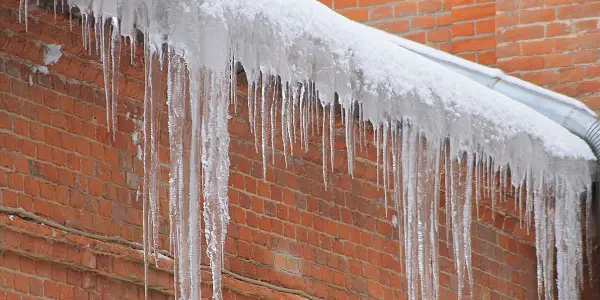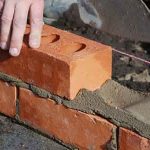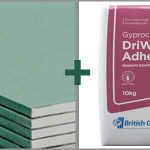Most people will assume that all bricks are frost resistant. After all, they’re exposed to the elements and in the UK, we can have quite a bit of frost throughout the winter.
But there are different types of bricks with different properties and characteristics. These bricks will also have different uses, so some might not be as resistant to frost. This leads us to the question, are all bricks frost resistant?
As mentioned, there are several types of bricks available. Engineering bricks are dense and are the most frost resistant. Class A and Class B engineering bricks are both frost resistant to a varying extent. Facing bricks are also quite frost resistant, but common bricks do not fare as well in freezing temperatures.
External and internal bricks can differ when it comes to frost resistance. So, they are given an F rating depending on their level of frost resistance. The different ratings are:
- F0 which means they will not offer good resistance to frost
- F1 bricks are slightly frost resistant
- F2 are bricks which offer the highest level of resistance to frost exposure.
Are Class A Engineering Bricks Frost Resistant? –

Class A engineering bricks have a high level of strength. They have a design that will help to improve the strength and durability of walls and buildings. This means that it’s not common to use them for their aesthetic qualities, to improve the look of a building.
This type of engineering brick will have a compressive strength of more than 125N/mm2. This means they can support more weight than standard bricks, meaning they are often used as pad stones. They also have water absorption of less than 4.5%, making them more frost resistant.
As building regulations state, Class A engineering bricks are F2 frost rated. This means that it’s possible to use them in situations where there is exposure to frost. As a result, they are usually used below ground level.
Are Class B Engineering Bricks Frost Resistant?
Class B engineering bricks offer a good level of frost resistance. They are also used because of their durability and strength. You can use them for a range of purposes such as damp proof courses and retaining walls.
They have a compressive strength of 75N/mm2 and water absorption of less than 7.5%. This makes them slightly different to Class A engineering bricks.
It’s not common to use these types of bricks to improve the appearance of buildings. Instead, they are used for their other qualities which include a good level of frost resistance.
Are common bricks frost resistant?
Common bricks were once a heavily used brick in UK construction, but this is less common in recent years. You will see them internally and they also take on the name of ‘Fill’ bricks.
Because they are more commonly used internally, you might assume that they are not frost resistant at all, However, this is not entirely true, and they will withstand some level of frost.
With that said, they do offer lower strength and are less resistant to frost in comparison to most other bricks. Despite this, it’s possible to use them in areas that are not completely exposed to frost. But you should use additional durable construction materials to improve their strength.
Are facing bricks frost resistant?
Facing bricks are the most popular type of brick in the UK and you will see them most often in house building. They come in a range of colours and textures which offers plenty of choice. There is a wide range of options available, and these can influence the appearance of a building.
With exposure to the elements, it does mean that they must be frost resistant. This means facing bricks will usually have an F1 or F2 durability rating. There are many types of facing bricks, but most will have relatively low water absorption. This makes them less prone to taking on water and freezing.
Are concrete bricks frost resistant?
Concrete bricks are a suitable alternative to clay bricks. So, you will find them in many different forms such as facing, common and engineering. This means that they are suitable for a variety of uses such as internal and external use.
They are strong and durable, making them suitable for use below ground. Most concrete bricks have a strength of 22N/mm2 and have a similar frost resistance class to F2 clay bricks.
What are The Different Frost Resistant Ratings?
Bricks are given a durability rating. This means that bricks will fall into three categories.
- F1 – These are frost resistant and can be used in all types of exposure and building works.
- F2 – These types of bricks have a lower level of frost resistance. They can remain saturated and withstand continuous freezing and thawing. It’s possible to use them between damp proof course (DPC) and eaves, although they should not be used in elevated and exposed areas. They should not be used below ground DPC level, for cills, coping, capping’s, or landscaping
- F0- This means that bricks are not frost resistant and can only be used internally.
Conclusion
It’s important to understand the frost resistance of bricks, but this does depend on how you will use them. If they are used externally, they will need to be frost resistant in the UK. The level of frost resistance will depend on where they are being used externally.
However, it’s important to remember that bricks are not frost proof! They are frost resistant. This means that they are not completely protected against constant freezing temperatures.




